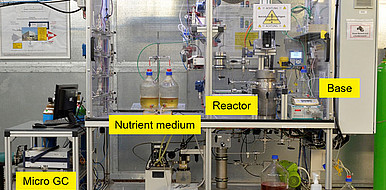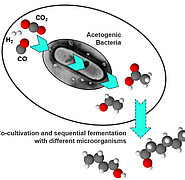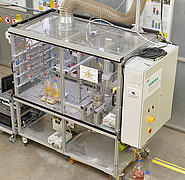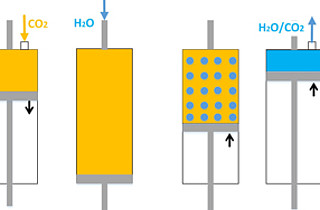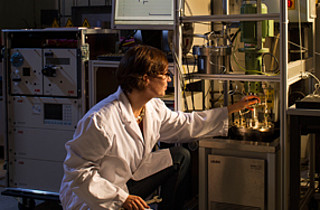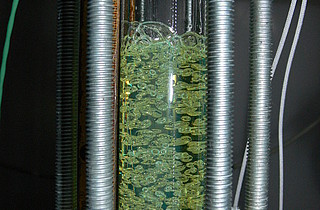Continuous fermentation of synthesis gas
Gas mixtures of hydrogen, carbon monoxide and carbon dioxide are classic synthesis gases from which a wide variety of basic chemicals, such as acetic acid and ethanol, are produced with the aid of chemical processes. Various fine chemicals can be formed via several synthesis routes, e.g. for the cosmetics, food or chemical industries.
State of the technology
Alternatives to the conventional synthesis steps are enzymatic catalyzed reactions. Here, microorganisms convert the gas mixture into liquid chemicals by means of fermentation. The living microorganisms multiply independently in the reaction suspension. They have a high selectivity and, with regard to the gas composition, a high flexibility. In the usual batch operation, however, the bacteria die off after some time due to nutrient limitation. After a maximum of 300 hours, the plant must be opened, sterilized and restarted.
Technology
With a new plant concept that enables continuous operation of synthesis gas fermentation over several thousand operating hours, researchers of the Institute for Catalysis Research and Technology (IKFT) at KIT are creating the basis for effective, economical use of the process. All components are integrated into a process control system for fully automated continuous operation and can be controlled: Synthesis gas flows continuously into the reactor and serves the bacteria as a source of energy and carbon. The composition of the gases can be adjusted as required. The system continuously provides a nutrient medium (trace elements, vitamins and salts) for the bacteria and simultaneously regulates the pH value by adding caustic solution. Process-critical foam, which is produced by degradation processes of the bacteria, is mechanically destroyed. The fill level in the stainless steel stirred tank of the reactor is detected and constantly controlled by a level probe. To increase gas solubility, the process pressure can be raised to a maximum of 10 bar. A wide range of options for online and offline analysis are integrated.
Advantage
The higher process pressure improves the gas-liquid mass transfer and the continuous operation of the fermentation plant increases the overall productivity. The apparatus does not use chemical additives for foam destruction. As a result, the valuable bacterial cultures are not affected by additives.
Options for companies
KIT is looking for partners to further develop the process. The prototype plant can also be used for parameter studies on the design of synthesis gas fermentation for companies.
Your contact person for this offer
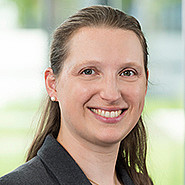
Innovation Manager Energy Karlsruhe Institute of Technology (KIT)
Innovation and Relations Management (IRM) Phone: +49 721 608-25335
Email: pelisson-schecker@kit.edu

